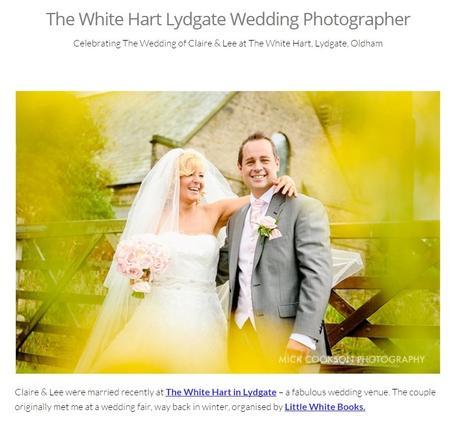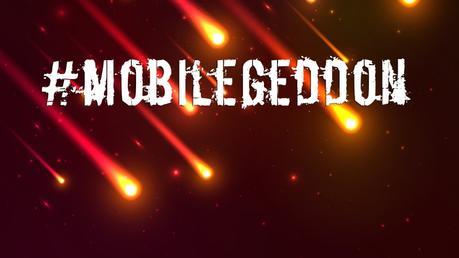The fundamental building blocks of search engine optimisation haven’t changed in many years, there isn’t a single Google update which has changed them. In this article are five golden seo strategies which will not only see your rankings increase today but also going forward into 2016 and beyond. These are evergreen and easy to remember.
1) Only The Best Content
Content is King, as someone once said, and its true. For photographers displaying your work is all about showing off how fantastic your photography is, but it needs to be more than just a bunch of pictures – it is increasingly rare to just see this type of page appear in search results.
Instead search engines and users want you to do something more, to display a little personality and talk about your work. Wedding Photographer Mick Cookson is always a fantastic example of this, all of his portfolio work includes lovely textual descriptions of the day and how the event unfolded. In his recent wedding portfolio piece of Claire and Lee at the White Hart Lydgate, Mick takes you through the day and cuts through the hub-ub and focuses on something simple like Rachael Bottomley and her work, or how the couple met.
This style works really well for Mick and other photographers, but other styles work well too. The important thing to remember is that without context and insight your photos are just photos and unless you’ve some mass audience of potential clients you drag to every page of your site … that work won’t be found.


Free SEO Guide
Photographers Guide to Getting Better Rankings
& More Qualified Leads
2) Basic Image Optimisation
Below are the basics of optimising your images for SEO and users, together they make a huge difference.
File Naming Convention – It is important that you find a naming structure/formula that is insightful & easy to use. This is both for your sake and search engines. For example white-hart-lydgate-oct2015-photo1.jpg is much nicer and easier to understand that WHL-1015.jpg even though the later may suit your filing needs. Google can’t see into your images and guess what they are, give them as much help as possible. It’s a good idea to use some keywords here.
ALT Text – This is a much underused tag, every (and i mean every) image should have a unique alt tag. Use this to describe the content of the image directly, is it the couples first dance or the groom waiting for the bride at the white hart. Be descriptive, there is no limit to what you can include, but concise is often better and easier. Use descriptive keywords in your alt text.
Image Size (Dimension and File Size) – Where possible you shouldn’t oversize an image for the web, the only caveat here is that some systems and CMS themes will help you and auto-regenerate images – but don’t rely on this. If you know your site won’t be using an image bigger than 700px x 700px why output something larger that needs scaling (causing issues on mobile and older desktops) and increases file size – don’t do it. The second point here is to keep your file size down, the most simple way that photographers forget is to simply make your images 72dpi on output, anything more is wasted generally.
3) Go Mobile-Friendly
Nicknamed Mobilegeddon, in April 2015 Google rolled out a mass update to it’s core algorithm that means if your website is not mobile friendly & tablet friendly then you are unlikely to show for mobile search results.
Put simply, if you don’t want to miss out on potential traffic and customers ensure your website is nice to mobile. The core features of this are:
- A responsive / adapative website
- A fast website
- Not having a ton of adsense adverts
- Using relevant tags for mobile
Read more about Mobilegeddon on Search Engine Land.


4) It Can ALWAYS Be Faster
Most websites are not built for speed, especially not those by and for photographers. Large files of 5mb to 50mb (yes really), aren’t ever conducive to fast website speeds – and certainly not being mobile friendly. Reducing file size of images (shown above) is a great way to speed up a site, but there is more you can do.
In WordPress there are plenty of plugins you can use to improve the speed of your website through caching, my top 2 are WP Rocket (paid) and WP Super Cache (free).
For photographers a must-have for website speed is a CDN, this in essence takes a copy of your files and distributes them on extremely fast servers across the world ready to serve your site users. This also reduces the impact of loading on your server directly and will speed up other aspects of your site. I suggest using MaxCDN for this, its really simple to use and cheap.
There is plenty everyone can do to improve website speed, click here to read about how website speed can effect your conversion rate.
5) Stop Thinking of SEO as Optional
Optimising your website is not optional, it’s not a bold-on service that your web designers should be offering, it is an integral part to any business that has an online presence.
If SEO is integrated from the ground up, within your websites coding, within the plugins you utilise, within the way you output your photographs then you will do well in modern search. But if you “bolt it on” after you’ve made the site look pretty you will probably find it to be more expensive and have less of an effect.
The days of gone of producing and spinning content or buying backlinks or anything like that. It’s over and anyone who tells you otherwise is kidding you and taking you for a ride. SEO is an integral part of your website, take the above and implement it, it works for any site, of any kind and any size – these simple techniques are scalable and usable. Yes you could do more than this, look around SEO Andy for more ideas, but these are the integral building blocks you need to implement on your photography website for it to be a success.
Original SEO Content by SEOAndy @ Five Simple SEO Tips for Photographers

